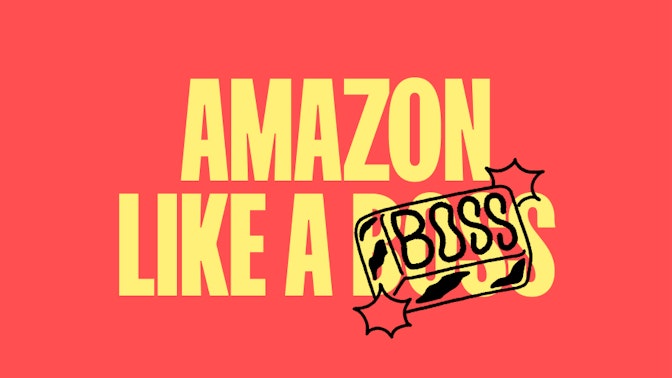While some may think email marketing is dead, that’s far from the truth. Data shows that a successful email marketing strategy can generate $36 of return on investment (ROI) for every $1 spent. This can have massive benefits for your business.
But many business owners and managers get stumped on how to create a newsletter that consistently gains email subscribers—and holds their attention long enough to convert them into paying customers.
In this article, we’ll go over everything you need to know to build great email marketing campaigns, from defining a strategy to finding the right email marketing software to designing and crafting the emails.



1. Determine the goal of your newsletter
You can start sending emails willy-nilly, or you can have a clear, outlined goal that you’re trying to accomplish. When you start with a goal and plan a strategy that you stick to, you’re better able to keep track of your progress and growth.
Think about the core business objectives your newsletter can help you achieve. Things like:
- A stronger relationship with your audience
- Educating email subscribers about who you are and what you have to offer
- Generating referrals and new business
- Making more revenue through sales of your product or service
- Gathering research data and customer feedback
You can choose one or more. Ideally, every email you send will help take you one step closer to your goals.
2. Define your email newsletter strategy
Creating an email marketing strategy is the process of being strategic and methodical about your email marketing campaigns. Here are some things to consider as you learn how to create a newsletter strategically:
- Who’s your target audience? Ideally, you should be segmenting your audiences into specific personas and groups, and sending emails based on their interests, personality, preferences, and buying behaviors.
- What will your email marketing campaigns cover? Consider topics like company news, behind-the-scenes interviews, how-tos and tips related to what your company offers, and time-sensitive info about sales, promotions, and current events.
- How will you get people to sign up? Consider capture points like your social media, website blog, checkout pages, pop-ups, and more.
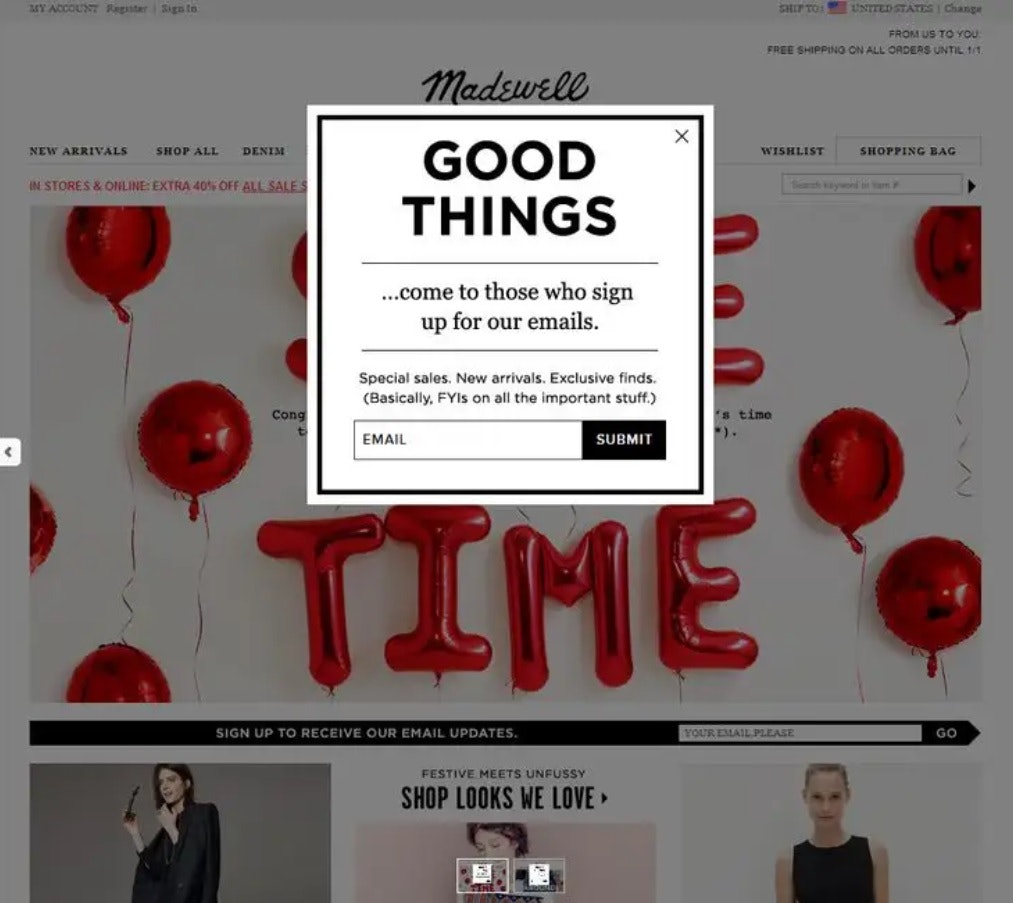
3. Choose your newsletter platform
There are tons of email marketing tools to choose from. While it may be tempting to send them through an email service provider like Gmail, we advise against this unless you’re just starting out. (It’s worth the investment to use a proper email marketing tool, and you’ll thank yourself later when you’re skipping the headaches!)
As you choose your tool, look for one that has key email marketing features while still being within your price point. For example, you may want one that’s optimized for mobile devices, offers newsletter templates, lets you design with a drag-and-drop editor, and includes call-to-action buttons. When you find one you like, try signing up for a free account to test features.
Here are a few top email marketing platforms:
4. Customize the design template
It’s important to have a consistent and reliable visual identity for your newsletter so email subscribers recognize your brand. This doesn’t mean every email needs to look exactly the same, but newsletter templates can help maintain a solid level of consistency.
Newsletter templates can help you keep your basic elements like logo, color palette, fonts, and visuals, while switching things up when you’re delivering different types of content. You can arrange headlines, text, and images and still maintain your brand’s vibe.
Mailchimp comes with more than 100 templates to keep your emails sharp, professional, and on point. Many other email marketing platforms offer the same.
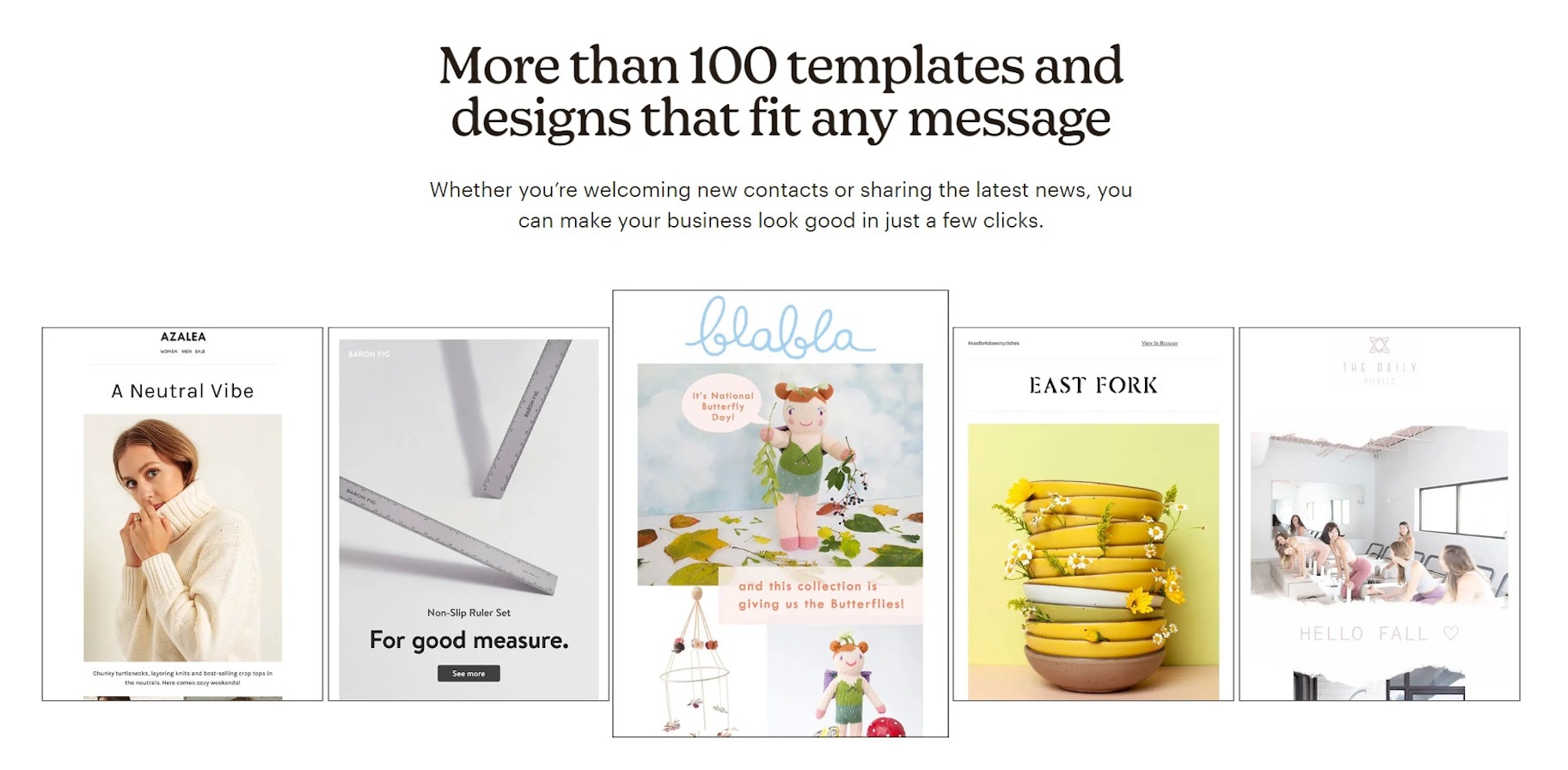
5. Create your send schedule
There are plenty of theories out there about the best times and frequency to send email marketing campaigns. Some say Tuesdays are the best day, while others say Friday.
While it’s a great idea to follow a few tips you find in your research, the most important thing is to try out your own schedule and see what works best for you and your audience. You may have completely different results than other brands, so find out for yourself.
Be sure to create a schedule that’s comfortable and reasonable for you to keep up with, while still having unique, interesting, and engaging things to say. Sending no emails is better than sending boring ones!
6. Ask people to subscribe
Try to get sign-ups from where people already interact with your business, such as your website and social media channels.
Adding a sign-up form on Shopify is simple and doesn’t require any coding skills. Consider creating a pop-up that’s triggered when someone lands on your homepage.
To incentivize people to subscribe, consider using strategies like contest entries, upfront discounts, and exclusive content.
For instance, Our Place engages potential subscribers by offering a daily contest, giving them a chance to win the coveted Always Pan, valued at $195.
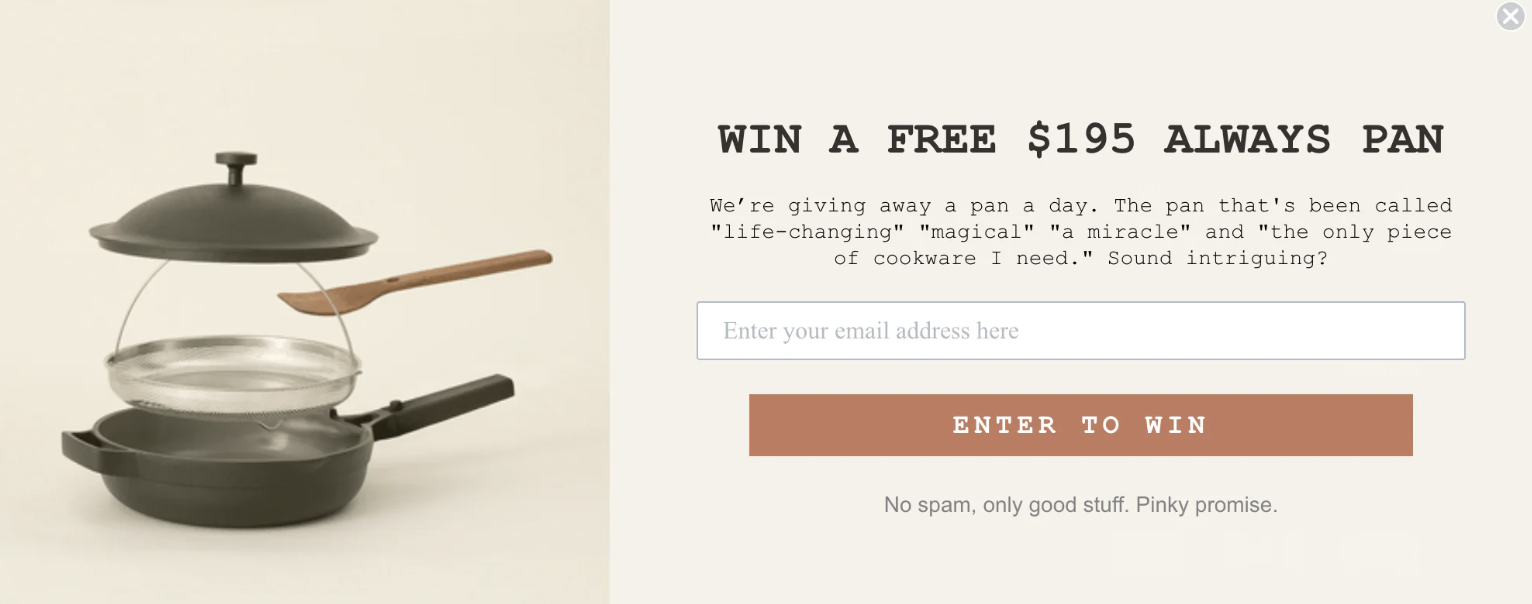
You can also leverage your social media presence to drive newsletter subscriptions.
Maximize the real estate on platforms like Instagram and Facebook by adding a newsletter sign-up link to your bio or About section.
If you’re using a link-in-bio tool like Linkpop, just add the newsletter subscription link to the section.
7. Set your automated email flow
While many of your emails should be unique and timely according to what’s going on right now with your brand, you should also have some automated emails. These include emails like welcome emails to new email subscribers that introduce your brand and what they can expect from the newsletter.
Other automated emails include things like birthday emails or abandoned cart emails for shoppers who don’t make a purchase.
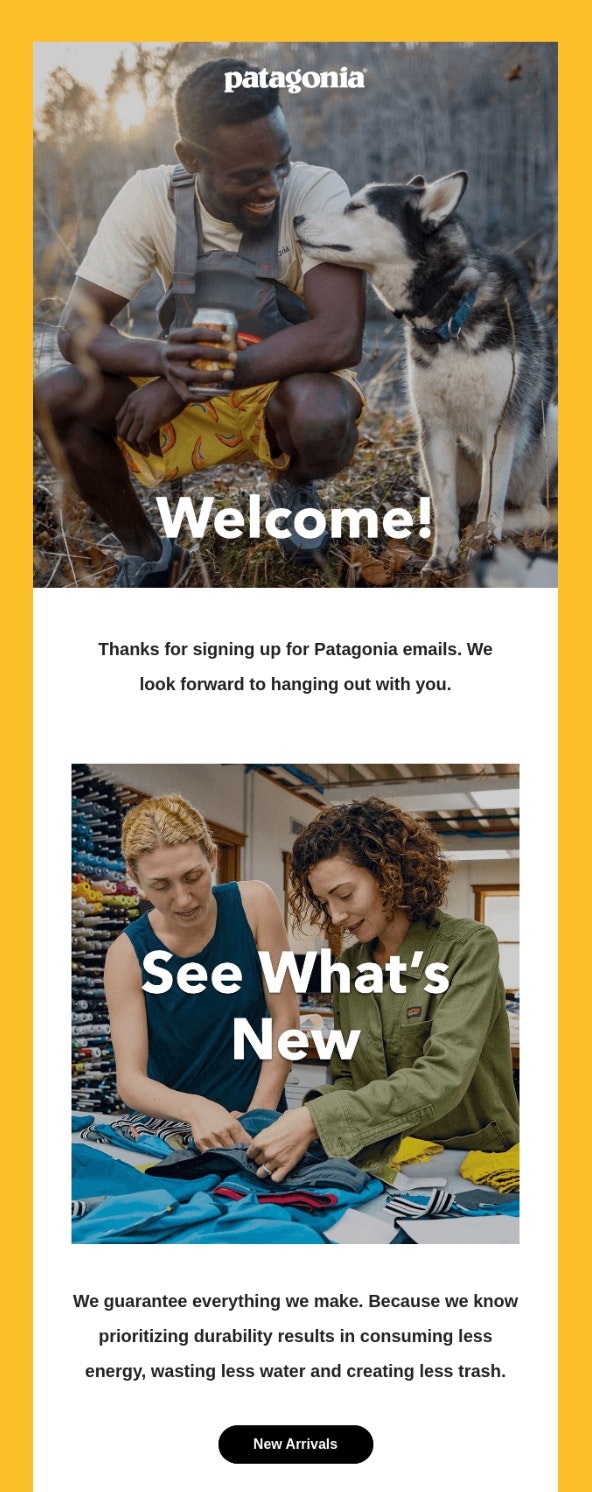
8. Comply with privacy regulations
Privacy laws and anti-spam regulations protect email addresses, just like phone numbers. Remember these laws when building your newsletter email list.
- Comply with GDPR: This EU privacy law applies to processing and storing data of individuals in the EU. Use GDPR-compliant platforms like Mailchimp.
- Comply with anti-spam laws: CAN-SPAM (US) and CASL (Canada) safeguard consumers from spam. Mailchimp requires CAN-SPAM compliance.
- Opt-in subscribers only: GDPR prohibits sending emails to non-opt-in recipients. Even customers need to opt in for unrelated newsletters explicitly.
- Avoid purchasing email lists: Buying addresses doesn’t count as “opting in” and violates GDPR.
- Provide business contact info: Add your business details in email footers to comply with anti-spam laws.
Non-compliance can lead to penalties and fees. Spam reports may mark your emails as junk or result in account suspension on newsletter platforms.
9. Send your first newsletter
It’s showtime. Once you’ve got a handle on email marketing strategy and setup, craft your first email. Here are some tips:
- Write a short, sweet, catchy, and engaging subject line.
- Send emails from the company, or from your first name to be more engaging.
- Select your email subscribers (including audience segments, if you’re breaking them up).
- Use headers to separate content.
- Use short, clear, and concise sentences.
- Break up text with eye-catching visuals.
- Create clear call-to-action buttons that encourage readers to take action.
- Personalize when possible.
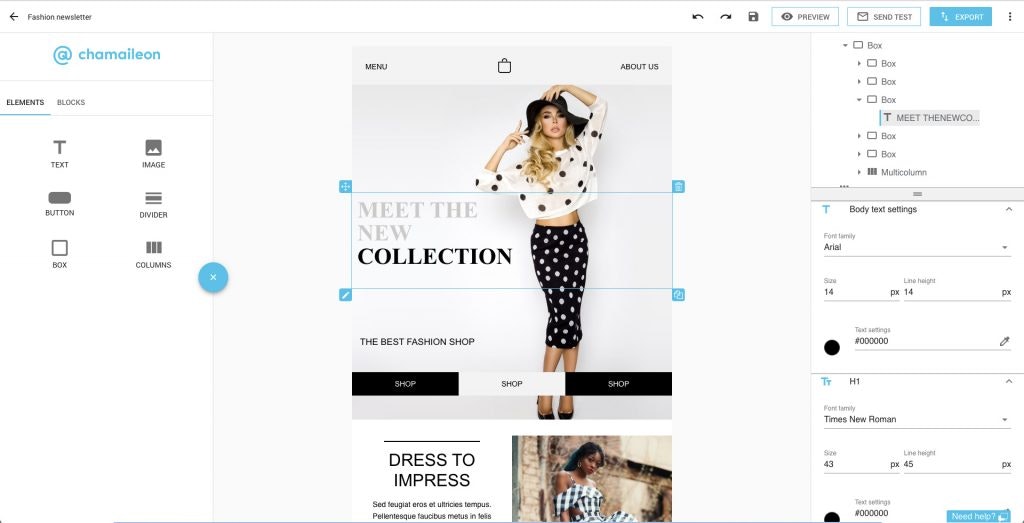
Stay consistent and attentive
When it comes to your email marketing strategy, the name of the game is to stay consistent while paying attention to what’s happening every step of the way. Maintain a steady plan while experimenting with new topics, email styles, audience targeting, and more.
Keep an eye on what’s happening: Which strategies and tactics are working best? Double down on the successful ones and tweak the ones that aren’t bringing results. With time, patience, and determination, you’ll have a successful email marketing strategy in no time.
How to create a newsletter FAQ
Why should I create a newsletter for my business?
Creating a newsletter for your business offers numerous benefits. It serves as a direct channel to engage with potential buyers and existing customers, allowing you to establish a strong connection. Additionally, unlike social media platforms, you have full ownership and control over your email list. By regularly communicating with your audience through informative content, occasional discounts, and product updates, and can cultivate brand loyalty and boost sales.
How do I create a professional looking newsletter?
Use the templates available in your email newsletter platform. Most platforms allow you to change the color, layout, and font of the template to resemble your official brand design.
What is the best platform to create a newsletter?
Look for an email newsletter platform that has a range of features, like email personalization, automation, segmentation, testing, scheduling, analytics, and customizable templates. Not all email providers offer the full range, so make sure to evaluate and select a platform that meets your specific needs. Some good options to consider are Shopify Mail, Brevo, MailerLite, and Convert Kit.




